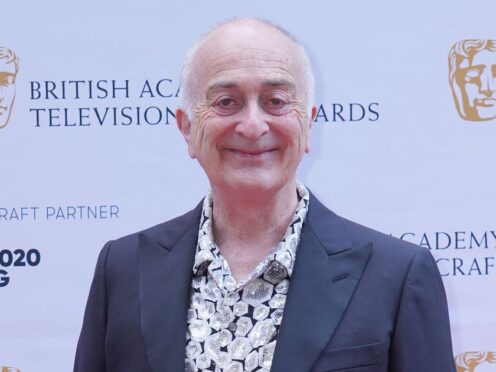Actor and historian Sir Tony Robinson has narrated a documentary detailing the “remarkable” story of the Flying Scotsman and how it became a national treasure to mark it’s 100-year anniversary.
Synonymous with the golden age of rail travel, the Flying Scotsman was built in Doncaster in 1923 and embarked on a journey to become a piece of British history.
During a test run in 1934, the Nigel Gresley-designed Flying Scotsman was the first steam locomotive in the UK to haul a train at 100 miles an hour before British Railways withdrew the locomotive from service in 1963.
It was purchased by the National Railway Museum in 2004 and was restored with £4.2 million from the National Heritage Memorial Fund, the Heritage Lottery Fund as well as from public donations.
The feature-length documentary includes the classic steam train’s journey from the UK to America, Australia and back and it’s many owners – including music producer Pete Waterman famously of Stock Aitken and Waterman.
Sir Tony told the PA news agency: “I think the story of what happened to the Flying Scotsman after it went out of service is truly quite remarkable and also very funny, although it cost a great number of people an enormous amount of money.
“I would love if I ever had to interview Pete Waterman about anything, the question I would like to ask him more than anything else is ‘how much money did you lose on The Flying Scotsman?’ because he got out of it luckily, he still seems to be pretty well-heeled.
“Most of the people who dived in to try to bring The Flying Scotsman back to life ended up bankrupt. It was taken to America, which should have been the most successful, greatest, most wonderful thing that could have happened to it.

“But there were a series of mistakes, mishaps, misunderstandings, which eventually led to the company that was promoting it going broke, and they had to hide it.
“They hid The Flying Scotsman so that the bailiffs wouldn’t come in, take it away and melt it down. It became a kind of comic person in its own right for a few years, while people threw yet more money into it and went bust.”
The 76-year-old said the thing he finds most interesting about the Flying Scotsman is it’s “longevity”.
He told PA: “It’s quite extraordinary that a steam engine should be built in the 1920s and then, 100 years later, if you stopped 80% of people in the street and said, ‘tell me the name of a steam engine’, they would say the Flying Scotsman. That’s pretty brilliant.
“It’s a brilliant name. Anybody who came up with that name now would be a millionaire overnight. But it captured, I think, the romance of the early railways.
“The idea of travelling so fast through England and Scotland, we’ve still got it with HS2. I know HS2 is extraordinarily controversial but nevertheless, it’s there in our imagination, we know about it.
“When they name the first engine, unless they call it the Boris Johnson which will be a marketing disaster, I’m sure it will become another of those glamorous pieces of engineering, just like the Flying Scotsman has been.”

Sir Tony said it would be great if people “understand the heritage of trains” as we come into a new generation of ecological manufacture and travel.
Rising to fame starring in comedy series Blackadder, Sir Tony’s career has also been shaped through his love of history from Tony Robinson’s Time Travels and Walking Through History, to Around The World By Train With Tony Robinson.
Speaking of his fondness for trains, Sir Tony said it is “the window” that draws him in.
He told PA: “The reality is it’s the romance, there is no other way of travelling which is like going by train. You don’t have to sit down all the time, like you do on the aeroplane.
“The seats by and large are pretty comfortable, and you’ve got this constantly changing vista. Most trains go through parts of the countryside you won’t know or won’t know very well which are pretty beautiful most of the year because mother earth is pretty beautiful for most of the year.
“So whatever train you go in, you want to look out the window.”
The Flying Scotsman 100th Anniversary Documentary is on digital now and on DVD from February 27.
